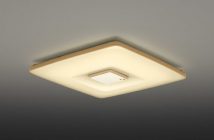1. LED Color
The color of an LED light is a very important parameter. The color should be indicated on each LED luminaire. At present, the most common LED colors are white, red, greed, blue, cyan, yellow, warm white, and amber.
2. Color Temperature
This color temperature index is an important part of any illumination arrangement. With different LED colors, relevant indexes will also change obviously. For reference, below are the corresponding color temperatures of different light sources.
Light Source Color Temperature Clear sky in the north: 8000-8500K Cloudy sky: 6500-7500K Sunlight of the summer noon: 5500K Metal halide lamp: 4000-5000K Sunlight in the afternoon: 4000K Cold color fluorescent lamp: 4000-5000K High pressure mercury lamp: 2500-3000K Halide lamp: 3000K Osram lamp: 2700K High pressure sodium lamp: 1950-2250K Candle light: 2000K
Light sources with different color temperatures also have different light colors:
The color temperature below 3000k can create a warm feeling and a steady atmosphere.
The color temperature between 3000k and 5000k can be considered a middle color temperature. It produces a refreshing feeling.
The color temperature above 5000k can invoke a cold feeling.
3. Light Intensity
Light intensity is described by the unit candela, abbreviated as cd. The luminous flux emitted by the light source at a unit solid angle in a given direction is defined as the light intensity of the light source in this direction. The light intensity is specific to the point light source or the situations where the illuminant size is relatively smaller than the irradiation distance.
This parameter shows the convergence of the illuminant in spatial emission. So to speak, the light intensity describes how “bright” a light source can be, because it can describe both the luminous power and the convergence ability.
The higher the light intensity, the brighter the light source will be. Under the same conditions, the object illuminated by the light source with higher light intensity will be brighter. Hence, flashlights often used this parameter in earlier days.
Now the LED light also uses this unit. For instance, a LED is 15000 mcd. 1000 mcd is equal to 1 cd, so 15000 mcd is 15 cd.The LED uses mcd instead of cd as the unit because the earliest LEDs were quite dim. For example, in 1984, the light intensity of a standard 5mm LED was only 0.005cd, which made mcd a much more appropriate measurement.
One disadvantage of using light intensity to describe the “brightness” is that if two LEDs have the same die, the one with better convergence ability would have higher light intensity.
Therefore, the users should not merely pay attention to high intensity value, but also notice the irradiation angle. Many LEDs don’t realize high intensity values by increasing their own emission efficiency, but by lengthening the shot and narrowing the irradiation angle. Though this is applicable to LED flashlights, the viewing angle will be limited.
Additionally, with the same die, the intensity value of the 5mm LED is over two times higher than the 3 mm one, but only one fourth of the 10 mm one. The reason is that the larger the shot, the better the convergence performance.
4. Flux
Flux is measured in a unit called lumen, abbreviated as 1m. The quantity of light emitted by the light source in unit time is called the luminous flux. Similarly, this parameter is specific to the light source. It describes the quantum of light, equal to the luminous power.
The LED flux is a man-made parameter. It can be different for other animals. It’s not completely natural. So the definition is based on human eyes’ response to the light.
Human eyes have different senses towards different light colors. These senses have decided the conversion relation between the luminous flux and the luminous power. For the 555nm green-yellow light that human eyes are most sensitive to, 1W of luminous power is equal to 6831m. That is, after converted into the light with 555nm wave length, 1W luminous power is 683 lumens.
This is the highest light conversion efficiency, but it’s also the scale value, because human eyes are most sensitive to 555nm light. For other light color, such as 650nm red light, 1W light is only 73 lumens because human eyes are not sensitive to red light.
When it comes to white light, it depends because the light of many different spectral structures is white. For example, the LED white light, TV white light, and sunlight are obviously different, and they have different spectra.
5. LED Illumination
Illumination is measured in units called lux, abbreviated as lx. It refers to the illumination produced through the uniform distribution of 1 lumen luminous flux on a 1 square meter surface.
6. Color RenderingColor rendering is a qualitative measure of the ability of a light source to reveal the colors of objects faithfully. For example, the degree of how the color approximates reality; the color rendering of a light source is indicated by CRI (color rendering index), which shows the color deviation of an object under the light in comparison with the standard light (sunlight) illumination. It can fully reflect the color characteristics of the light source.
Light sources with a high CRI can better reveal the color and the color will approximate reality in our eyes; light sources with a lower CRI reveal the color in a less accurate way, so the color deviation will also be obvious.
The International Commission on Illumination (CIE) defines the sun CRI as 100. Various light sources have different CRI. For example, the CRI of HPSL is Ra=23, and the CRI of fluorescent lamp is Ra=60-90.
There are two kinds of color rendering:
Fidelity color rendering can correctly present the object’s original color. Light sources with high Color Rendering Index (Ra) are necessary. It will work the best when its value is close to 100.
Effect color rendering can distinctively lay emphasis on a certain color. Additive process can be employed to reinforce the color rendering effect.
7. Glare
Glare is the visual discomfort caused by object with extremely high luminance or strong luminance contrast. Glare is one key factor that affects illuminating quality.
8. LED life
In general instructions, LED are said to have more than 50,000 hours’ service life Some are even advertised by manufacturers as having up to 100,000 hours’ service life. In the case of particularly long-lasting LED lights, it’s not that LED can’t continue to work past the given number of hours. Instead, the service life of the LED lights can’t be measured by traditional luminaire measuring method.
When measuring LED’s service life, most people can’t out-wait the actual lifespan of the light. The reason LED lights can hold out for so long is because these lights have no filament to be fused. The LED won’t stop working outright. What it will do is gradually degenerate and become less intense as time goes on.
It is estimated that a high quality LED light will still reach at least 60% of its original lighting intensity after working for 50,000 hours.
9. Beam angle
High directional beam. 5 – 20° It can be used as local lighting source or automatic detecting system in combination with light detector.
Standard. This class is generally used as an indicator light. Its beam angle is 20 – 45°.
Scattering. This class is a kind of indicator light with relatively high visual angle. Its irritation is 45 – 90°.



